Description
Book Reviews
The Doar Ivri Issue of Israel:
Postal and Commercial Usages of the Three High Value Stamps
by Ed Kroft Q.C. FRPSC
Israel Philatelist, Summer 2020
For many years our former president Ed Kroft has been dazzling us with wonderful scientific articles on the appropriate usage of Israel’s stamps. Stamps were originally created to be a simple vehicle for paying a tax for the privilege of sending information from one person to another. From the earliest days we collectors, consumed by the passion of acquisition, soaked off these beautiful labels and entrapped them on album pages. Most “Stamp Collections” contained scattered examples of envelopes to demonstrate the proper postal usage of the collected stamps but these envelopes were not the focus of the collections.
Over the last 25 years there has been a dramatic shift in the style of collecting. Postal history now reins. Having been bitten by the Israel postal history bug many years ago I was enthralled with the Idea of collecting envelopes with every possible postal usage of the Doar Ivri issue. This posed a daunting challenge. This was especially true with the high value stamps. Most of the stamps were soaked off the envelopes. The envelopes that remain were for the most part buried in collections, many in boxes designed for envelopes too large to fit on the usual album pages. I was thrilled to exhibit a complete frame of these stamps at shows.
This book sets out for us an astounding array of examples of the use of these stamps. It is hard to imagine that any one person could have amassed such a collection. The book is very well written. The first chapter is the major narrative, telling the story of the stamps, and contains the key postal rate tables. It includes numerous postal rate tables from the author’s previous research. In the beginning of the book there is a complete list of the illustrations. This is extremely useful since a reader can focus on any specific rate or destination with no need to skim through the entire text.
The remainder of the book is presented as very high quality photos of the envelopes with brief legends attached. Chapters 2-4 contain covers that primarily depict the 3 different values. Mixed franking is common throughout this section and some of the covers could have happily found a place with their mates in other chapters.
Chapter 5 shows high franking covers that do not use the 3 high value stamps. They are interesting as a sub set.
Chapter 6 shows envelopes that reveal high franking but do not use the Doar Ivri stamps. Although it is off topic it is magnificent. It demonstrates letters and parcel cards with multiples of the later high value stamps. These covers and cards are very hard to find. Such a collection could not be reproduced.
This book is a wonderful addition to the Doar Ivri literature. Any Israel postal historian will be thrilled to add this to their library.
It was my special pleasure to be asked to review this book. It allowed me a visit with many old friends.
Stephen L. G. Rothman MD.
The book has 138 figures and 103 pages.
Shovel October 2020, Issue 119. (Translated by Dr. David Dubin)
Ed Kroft, SIP President, has for many years collected and researched unique details regarding postal rates on covers franked with the high value Doar Ivri stamps and other expensive stamps issued later, such as the (Road to) Jerusalem stamp, Petah Tikva, Negev and others. While the original idea of Israel philately formerly involved traditional collecting, that is, researching the stamp and its varieties, Kroft’s study involves postal history, a branch of philately involving research of the entirety of the posted cover — the postal rate attached, postmarks, dates, added notations and more. Each of the 138 covers presented in the book has its rate explained and deeply investigated. This book is a must-have for researching the postal history of the early days of the state. The introduction to the book was written by our member Yacov Tsachor.

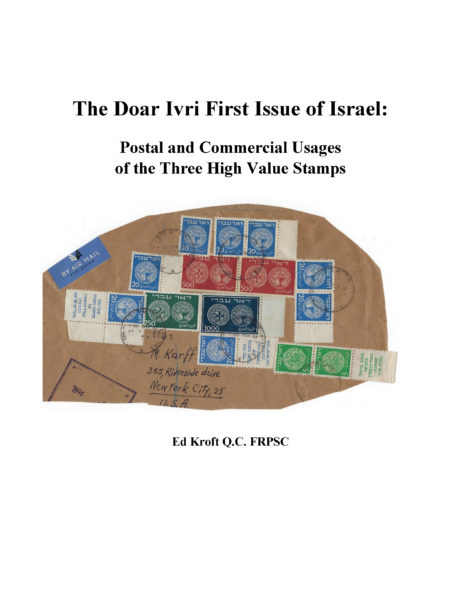
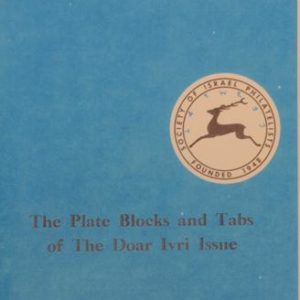
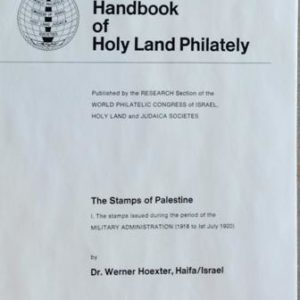
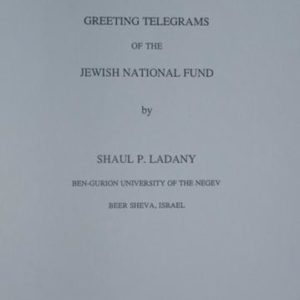
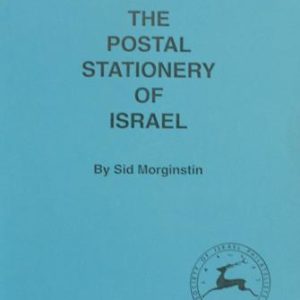


ED KROFT –
“The book is a wonderful addition to the Doar Ivri literature. Any Israeli postal historian will be thrilled to add this to their library.“
Quote from book review by Dr. Stephen Rothman in the summer 2020 issue of the Israel Philatelist pages 56-57